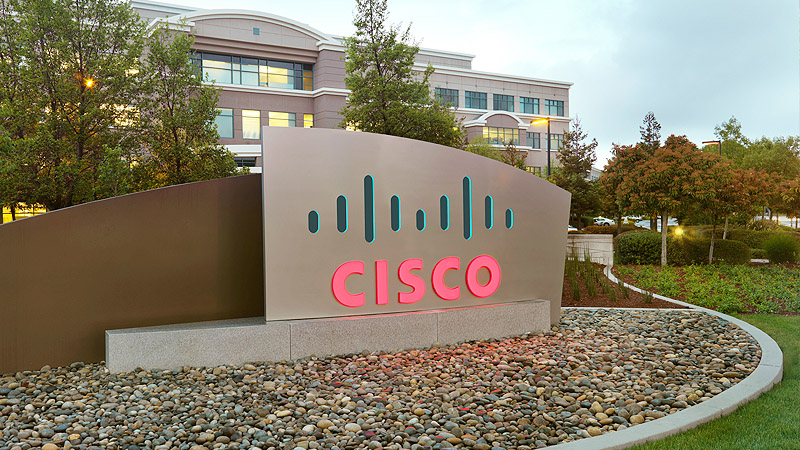CHENGDU, China - July 28, 2010 - Cisco today delivered its 'Connecting Sichuan' year two report to the Sichuan provincial government, detailing the company's progress in collaborating with a multitude of local partners to improve the state of education and healthcare in the province after the devastating May 12th Wenchuan earthquake struck two years ago. At a meeting held jointly by Cisco and the Sichuan provincial government, Cisco provided a look at the past year's accomplishments in the Connecting Sichuan program to assist post-quake reconstruction. Huang Xiaoxiang, Vice Governor of the Sichuan provincial government, and Owen Chan, President and CEO of Cisco Greater China, attended the meeting.
The report details major progress in the implementation of a collaborative healthcare model that links the resources of top urban hospitals to patients in rural areas. For example, a regional healthcare network now connects all 32 health institutions in Shifang City, achieving an unprecedented pooling of resources. In education, more than 500 21st century classrooms have been equipped with advanced technology that allows more than 31,000 students in rural areas to learn in new, interactive ways, and a virtual education solution allows rural students to remotely attend classes taught by master teachers in urban schools.
According to the report, the first year of the Connecting Sichuan program was devoted primarily to planning, designing innovative solutions, implementing pilot projects and testing their effectiveness. With the participation of more than 75 partners, the first year of the Connecting Sichuan program laid a solid foundation for Year Two.
Aimed at establishing a foundation for long-term sustainability, Year Two focused on five categories: finalizing infrastructure, training programs, testing for successful solution utilization, risk mitigation and sustainability. Over the past year, a new corporate social responsibility (CSR) concept emerged known as Collaborative CSR. This holistic, multiparty, long-term approach is designed to create a sustained advantage for communities and individuals throughout the province. Collaborative CSR has been a key factor in Connecting Sichuan's successful reconstruction efforts.
The Connecting Sichuan program has directed major investments in the communities and economic future of Sichuan. By collaborating with a wide range of organizations, Cisco has built the program capacity and increased the number of Internet-enabled schools, hospitals and clinics, and has launched professional development courses to cultivate skills in information and communications technology. These investments in 21st century ICT infrastructure and skills development will serve as a foundation for sustainable long-term growth.
"Cisco has always been committed to giving back in China, and we are pleased to be part of the Sichuan rebuild efforts. Connecting Sichuan has made solid progress in its first two years. Along with our partners, we have put in place the 21st century healthcare and education technologies and solutions in Sichuan, a model that can be replicated around China and the world. In its third year, we will focus on helping the communities in Sichuan to fully utilize the technologies and solutions to achieve long-term sustainability," said Owen Chan, President and CEO, Cisco Greater China.
Innovative Models of 21st Century Healthcare
Closely aligned with the overall Wenchuan earthquake recovery model and with China's Health 2020 reform plan, the Connecting Sichuan healthcare initiative aims to create innovative models of 21st century healthcare that can be replicated in other parts of Sichuan and China. Cisco designed and implemented models that use technology to increase access to healthcare, improve the quality of care and establish a platform to address the shortage of resident medical personnel, one of the most pressing healthcare problems facing rural China today.
As hospitals and clinics are rebuilt, networking technologies are being installed in select communities that will help to form regional healthcare information networks under a collaborative care model. These networks enable the sharing of physical and human resources, such as remote consultations between local doctors and distantly located specialists, greatly raising regional medical standards. They also facilitate ongoing medical education and the sharing of best practices to foster professional development and long-term sustainability.
Improving Educational Access and Quality
Connecting Sichuan also supports an innovative education initiative which uses state-of-art technology to improve educational access and quality, and to bridge the gap between urban schools and schools in rural areas. Connected classrooms have been set up to enable distance learning as part of 21st century education models that have been designed and implemented in 27 schools, including one college. A virtual education solution also allows rural schools to gain access to highly qualified teachers while local teachers are able to observe and work with master instructors.
Cisco has prioritized the expansion of the Cisco Networking Academy® in Sichuan as a key component in its commitment to help cultivate local talent. Cisco has launched 50 new Networking Academy sites in Sichuan. Networking academies equip students with the knowledge and skills necessary to meet the needs of a growing IT industry.
As the Connecting Sichuan program enters its third year, the initiative will be primarily devoted to underpinning long-term sustainable benefits to the local communities. Focusing on a "human infrastructure" that builds on the physical and technical infrastructure established in the first two years, this will require working closely with local leaders who share a commitment with Cisco to cultivating local ICT talent and learning from global best practices.
Appendix--Summary of Accomplishments for Connecting Sichuan, Year Two:
Healthcare:
- Delivering a blueprint and implementation plan for Sichuan's healthcare ICT development
- Completing the infrastructure of the regional healthcare data center and operation center in Wenchuan County, and successfully testing dispatching capabilities for 120 ambulance and regional collaborative healthcare services
- Constructing the Deyang Electronic Health Record data center and the Health ICT Training Center in Shifang, both of which are now operational
- Finalizing the design for the Sichuan Province Health Department's Emergency Command Center
- Completing regional collaborative health networks that connect all 32 health institutions in Shifang City using unified communications technology
- Installing a connected hospital environment in four hospitals, including a medical-grade 10 gigabit-per-second network, intelligent building design, and clinical collaboration applications
- Finishing plans for connected hospital projects in several other locations
- Completing the second phase of the Sichuan-Hong Kong Rehabilitation Network by establishing Cisco TelePresence® service (high-definition video/audio/data collaboration) between the Hong Kong Prince of Wales Hospital and the West China Hospital in Chengdu; to date, the network has extended physical and psychological care to 106 patients and is being used to train medical and technical personnel
- Delivering a mobile clinic equipped with medical equipment such as a digital X-ray machine and a Cisco TelePresence system to Wenchuan County
- Providing a health emergency response vehicle to the Sichuan Provincial Department of Health
- Delivering a mobile disease surveillance tool to China CDC and Wenchuan CDC
Education:
- Implementing 21st century education models in urban, township, and rural village communities, designed for maximum impact on performance at low cost
- Designing and implementing models of 21st century education in 27 schools, including one college
- Integrating interactive classroom technology into the existing education model by equipping over 500 21st century classrooms to modernize the way that more than 31,000 students are taught
- Launching a virtual education solution that enables master teachers in urban schools to teach interactive classes in rural schools
- Designing and implementing two virtual education data centers to support the "virtual education" solution being provided to rural schools
- Launching 50 new Networking Academy centers and enrolling 5,495 students, representing a 372 percent year-over-year enrollment increase in Sichuan


